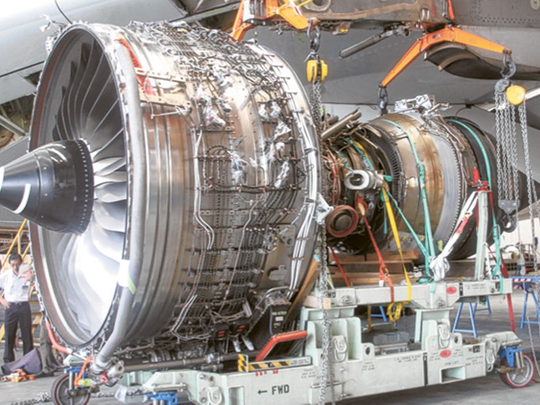
Paris: Many wondered whether the world's largest passenger plane would ever be born.
Sceptics called the 7-storey-tall Airbus A380 too big and ambitious when it was just a blueprint. There were wiring problems and debilitating management disputes. Time and again, the planemaker announced delays, exasperating investors and costing the company billions.
The A380 surmounted the problems, made its first passenger flight in 2007 and even became something of a celebrity — a roomy, smooth and quiet jetliner sought out by many business travellers and aviation enthusiastics.
Now the world's newest and costliest jetliner is facing a new challenge: a risk of oil leaks from a flaw in as many as 40 of the Rolls-Royce engines that power much of the global fleet of A380s.
The scale of the problem became public after a Qantas A380 engine blew apart in an oil fire on November 4. The metal shrapnel blasted holes in the wing" damaging a structural beam, cutting control lines, piercing two fuel tanks and setting off an unprecedented cascade of system failures.
Aviation experts said the plane's strength and its pilots' skill helped bring it down safely with more than 450 passengers aboard. But they also said the design and location of electrical wiring in the wings would likely have to be reconsidered.
Airbus said the need to temporarily replace dozens of engines while the potentially leaky part is replaced could cause more delays for deliveries of the superjumbo. Some deliveries could be pushed from the first half of 2011 to the second, analysts said.
The incident will "probably slow things down a bit" in terms of Airbus' production and delivery schedule for the aircraft, said Richard Aboulafia, an aviation analyst at Teal Group. "They will probably miss a few deliveries."
The Rolls-Royce engines equip 21 of the 39 A380s currently in operators' fleets. The rest are powered by motors built by the Engine Alliance, a 50/50 joint venture between GE Aircraft Engines and Pratt & Whitney, which are currently used by Emirates and Air France.
Airbus spokesman Justin Dubon acknowledged that the Qantas incident was the A380's most significant problem so far. But he defended the aircraft's record.
Boeing also has had a string of troubles with developing its much-awaited and much-delayed 787 Dreamliner, and is probably watching the fallout of the Qantas incident carefully.











